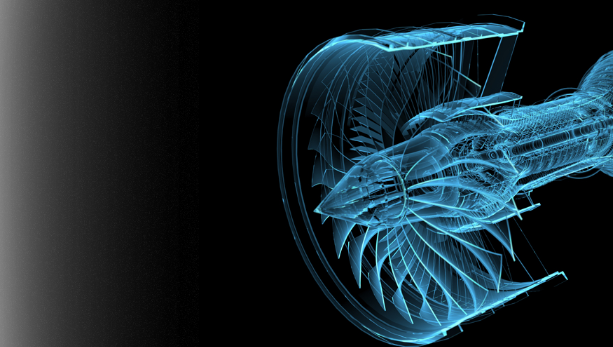Quantum X-rays: A New Era for Non-Destructive Testing
Introduction: The Intersection of Quantum Science and Non-Destructive Testing
X-ray technology has long been a crucial tool in various industries, from medical diagnostics to security screening and materials testing. However, traditional X-ray imaging has limitations, such as radiation exposure risks, low contrast in soft materials, and image resolution constraints. The advent of quantum technology is now revolutionizing non-destructive testing (NDT), enabling higher precision, reduced radiation doses, and enhanced imaging techniques. This article explores how quantum mechanics is transforming X-ray-based NDT and what this means for industries relying on advanced inspection methods.
Understanding the Basics of Quantum Technology
Quantum technology leverages the principles of quantum mechanics, including superposition, entanglement, and quantum tunneling, to process and transmit information in novel ways. Unlike classical physics, quantum mechanics allows particles to exist in multiple states simultaneously, enabling unprecedented computational power and sensing capabilities.
In the realm of X-ray imaging, quantum technology introduces quantum-enhanced sensors, quantum computing applications, and quantum imaging techniques that significantly improve accuracy and efficiency in non-destructive testing.
The Role of Quantum Technology in Non-Destructive Testing
1. Quantum-Enhanced X-ray Detection
Traditional X-ray detectors rely on conventional materials to capture X-ray photons, which can result in noise interference and reduced image clarity. Quantum-enhanced detectors use materials like quantum dots and superconducting sensors that provide superior sensitivity and higher resolution imaging.
- Quantum Dots: These nanocrystals absorb and emit X-ray photons with high precision, leading to clearer images with lower doses of radiation.
- Superconducting Detectors: Operating at extremely low temperatures, these detectors can identify individual X-ray photons, reducing noise and improving contrast in industrial inspections.
2. Quantum Entanglement for Improved Image Resolution
Quantum entanglement, a phenomenon where two particles become interconnected regardless of distance, is being harnessed to improve X-ray imaging techniques. Quantum-entangled X-rays can provide:
- Higher-resolution images with less radiation exposure
- Enhanced contrast in complex materials, making it easier to detect structural weaknesses or hidden defects
- Reduction in image artifacts, leading to more accurate assessments in non-destructive testing
3. Quantum Computing in Image Processing
Quantum computing, with its ability to process vast amounts of data at incredible speeds, is transforming the way X-ray images are analyzed. Quantum algorithms can:
- Enhance image reconstruction by reducing noise and improving sharpness
- Speed up complex computations, allowing for real-time testing and analysis
- Detect patterns in material defects, leading to earlier and more accurate failure predictions
4. Quantum Imaging Techniques for Safer and More Efficient Inspections
Quantum imaging techniques such as ghost imaging and quantum illumination offer new ways to capture X-ray images with minimal radiation exposure.
- Ghost Imaging: This technique uses correlated photon pairs to reconstruct images, reducing the amount of X-ray radiation needed for high-quality imaging.
- Quantum Illumination: By leveraging entangled photons, this method improves image contrast and reduces interference, making it ideal for detecting microscopic cracks, voids, and material inconsistencies.
Advantages of Quantum-Driven X-ray Imaging in Non-Destructive Testing
1. Reduced Radiation Exposure
One of the biggest concerns with traditional X-ray imaging is the potential harm caused by radiation exposure. Quantum-enhanced technologies allow for clearer images at significantly lower radiation doses, reducing health risks for workers and ensuring safer industrial environments.
2. Higher Precision and Better Defect Detection
Quantum technology enables sharper and more detailed imaging, making it easier for engineers and inspectors to detect structural weaknesses, corrosion, and microscopic fractures in materials such as metals, composites, and ceramics.
3. Faster Image Processing and Real-Time Inspections
With quantum computing-driven analysis, X-ray images can be processed in real-time, leading to quicker inspections, reduced downtime, and faster decision-making in industrial applications.
4. Improved Imaging for Complex Structures
Unlike traditional X-rays that struggle with layered or intricate materials, quantum-enhanced imaging offers better contrast and clarity for aerospace components, pipelines, and microelectronics, improving the accuracy of structural assessments.
Challenges and Future Prospects of Quantum X-ray Imaging in NDT
Challenges in Implementation
While quantum technology holds immense promise, several challenges need to be addressed:
- High Cost of Quantum Devices: Advanced quantum sensors and computing systems require significant investment.
- Complexity of Quantum Algorithms: Integrating quantum computing into industrial testing workflows demands expertise and specialized hardware.
- Limited Accessibility: Currently, quantum-enhanced imaging is not widely available in non-destructive testing due to ongoing research and development.
Future Prospects
As research progresses, quantum-enhanced X-ray imaging is expected to become more practical and widely adopted. Potential future developments include:
- Portable quantum X-ray machines for on-site industrial inspections
- Integration of AI with quantum imaging to automate defect detection and improve accuracy
- Quantum-enhanced imaging for aerospace, automotive, and electronics industries to ensure product reliability and safety
Conclusion: The Future of Non-Destructive Testing with Quantum Innovation
Quantum technology is poised to revolutionize X-ray-based non-destructive testing by offering safer, faster, and more accurate inspection solutions. With advancements in quantum detectors, quantum computing, and innovative imaging techniques, industries such as aerospace, manufacturing, and infrastructure are on the brink of a new era in material assessment. While challenges remain, continued research and investment in quantum-enhanced imaging promise a future where industrial testing is more efficient, precise, and accessible than ever before.
Also Read :
